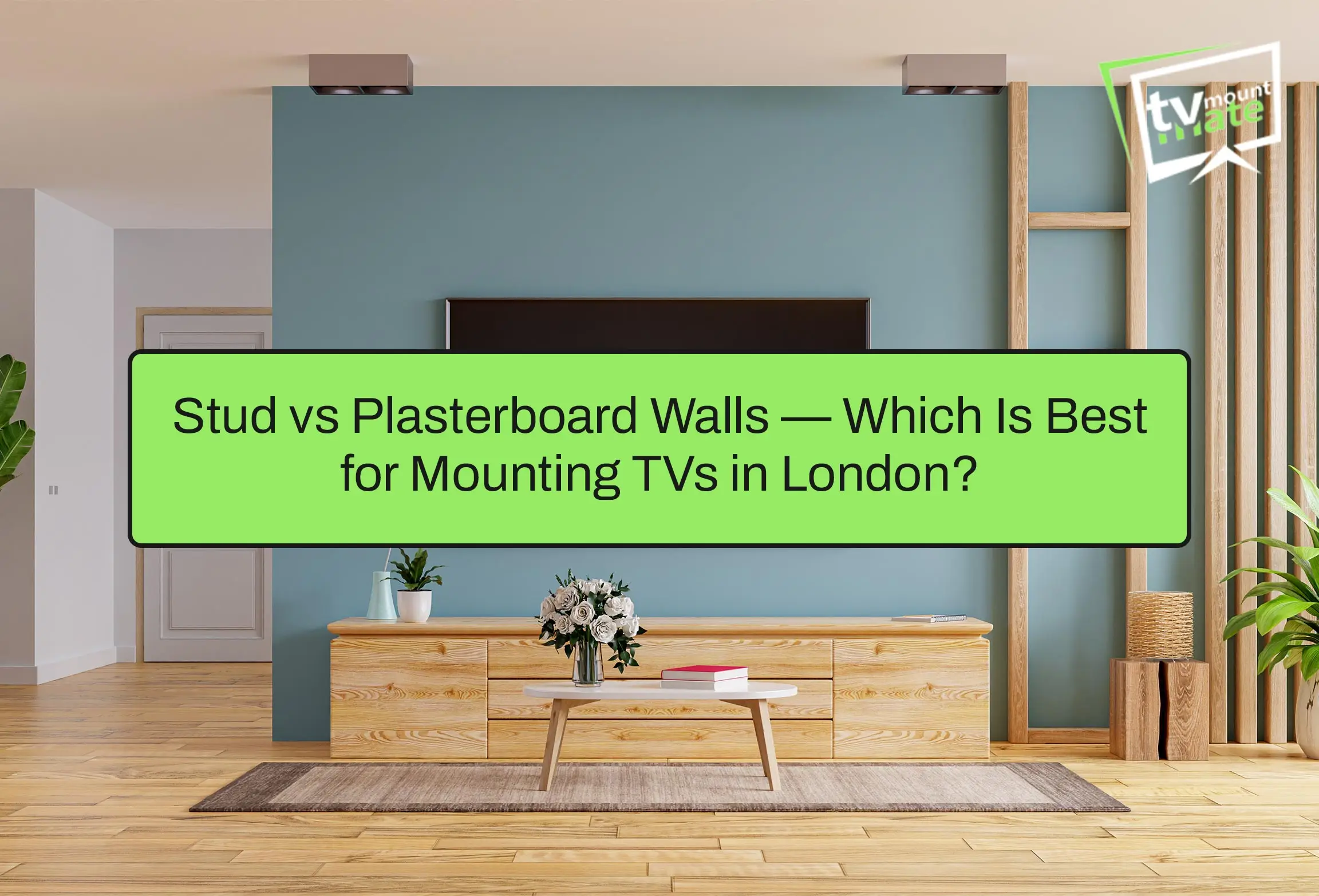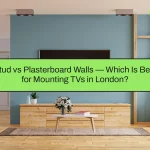When it comes to mounting a TV on your wall, one of the first questions is: “What type of wall do I have—stud or plasterboard?” The answer matters because it determines how secure your installation will be.
In London homes, both wall types are common. New-build flats often use plasterboard with metal studs, while older Victorian homes may have solid walls covered with plasterboard. Understanding the difference is the key to safe and successful TV mounting.
What Are Stud Walls?
A stud wall is a framework of vertical supports (studs), usually timber or metal, covered with plasterboard.
- Timber Studs → Common in older UK builds, strong for mounting TVs.
- Metal Studs → Popular in modern London new-builds, lighter but trickier to mount into.
Pros of Stud Walls:
- Stronger fixing points when you mount directly into the stud.
- Can handle heavy TVs if installed correctly.
- Easy to locate with a stud finder.
Cons of Stud Walls:
- Studs aren’t always where you want them—brackets may need adjusting.
- Metal studs require specialist cavity fixings.
What Are Plasterboard Walls?
Plasterboard walls are sheets of gypsum attached either to a stud framework or directly onto masonry using “dot-and-dab” adhesive.
Pros of Plasterboard Walls:
- Lightweight, smooth surface.
- Easy to work with for small TVs and shelving.
- Common in London flats and extensions.
Cons of Plasterboard Walls:
- Weak on their own—can crumble under heavy loads.
- Standard wall plugs won’t hold a heavy TV.
- Risk of cracking if overloaded.
Check our article on – TV Bracket Types – Expert Guide for the Perfect Mount
London-Specific Scenarios.
1. New-Build Flats (Metal Studs + Plasterboard)
Most new-builds in London use metal stud walls. Heavy TVs require specialist anchors, such as self-drilling cavity fixings or GripIt. To stay safe, secure across multiple points or directly into masonry if there’s a supporting wall behind.
2. Victorian Homes (Solid Walls with Plasterboard Overlay)
Many Victorian houses have solid brick or block walls covered with plasterboard. This is ideal, because you can drill through the plasterboard into the brickwork, giving you the strength needed for large TVs.
3. Converted Flats with Mixed Walls
Some London flats combine internal stud walls with external solid walls. Always check carefully before drilling—knowing what you’re working with avoids mistakes.
Which Is Best for Mounting TVs?
- Small TVs (32–50 inches, under 20kg): Plasterboard with GripIt or toggle fixings can be safe.
- Medium TVs (55–65 inches, around 20–30kg): Safer on stud walls or dot-and-dab setups where you can hit masonry.
- Large TVs (70–100 inches, 30kg+): Stud walls or solid walls are the only safe options. Avoid relying on plasterboard alone for these weights.
Check our article on – TV Mounting Height Guide London – Best TV Viewing Angle Tips
FAQs: Stud vs Plasterboard for TV Mounting.
Conclusion.
When it comes to mounting TVs, stud walls are generally safer than plasterboard alone. That said, plasterboard can still handle medium-sized TVs if you use the right heavy-duty fixings.
For London homes:
- New-build flats often have metal studs—use specialist anchors.
- Victorian houses usually offer solid brick behind plasterboard—ideal for large TVs.
- Mixed flats may vary—always check wall type first.
If your TV is 65 inches or larger, or if you’re not sure about your wall type, a professional wall mounted TV installation service in London can ensure everything is done safely and securely.




Leave a comment